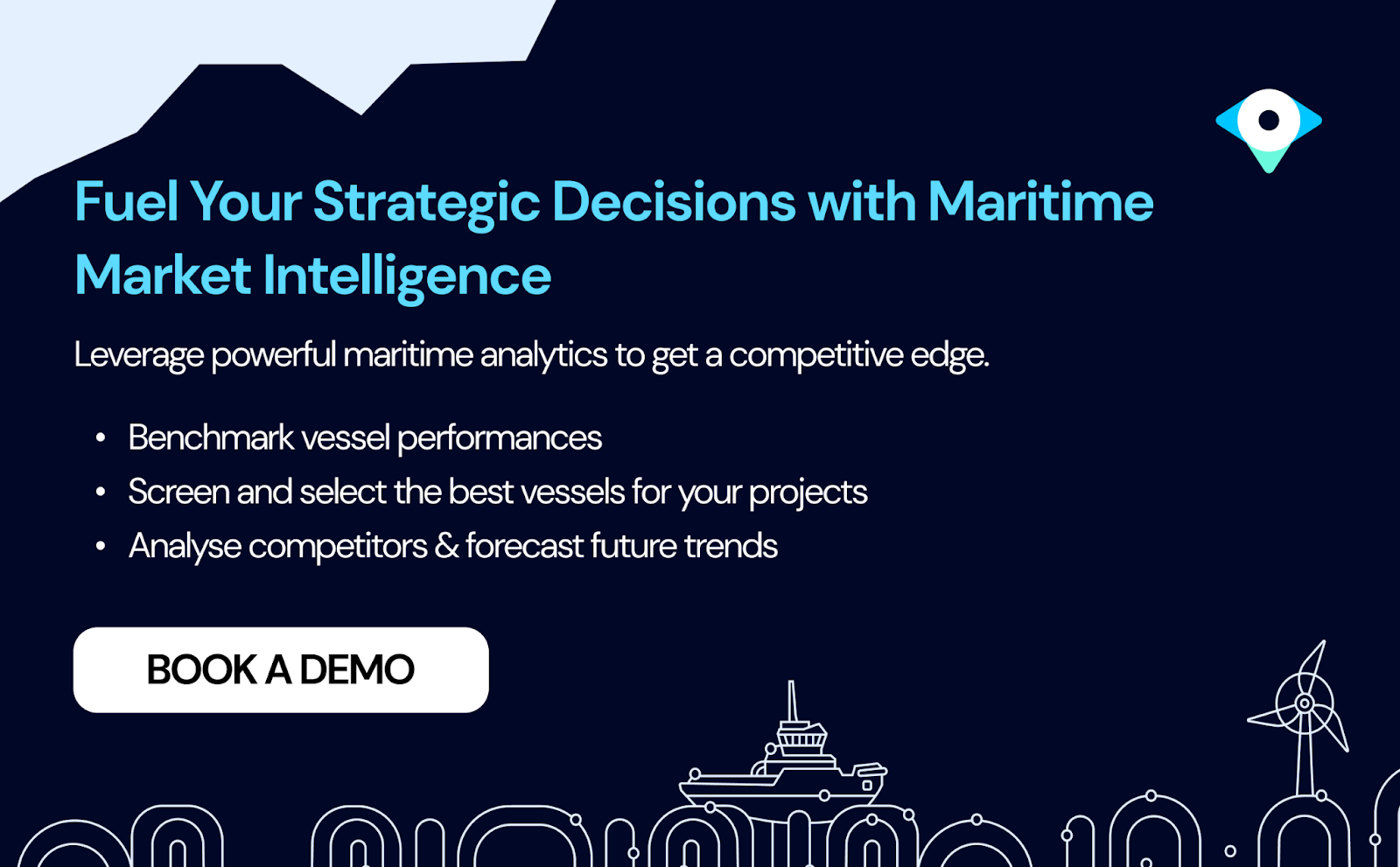Sarah McLean
,
Lead Content Manager
Author
, Published on
September 19, 2025
Sarah McLean
,
Lead Content Manager
Co-Author

Spinergie’s powerful Market Intelligence solution is a key tool for chartering teams to gather analysis before and during tendering exercises.

Since January 2023, the Anchor Handling Tug Supply (AHTS) and Platform Supply Vessel (PSV) combined sectors have seen effective utilization grow by 11%, but all sectors within the support fleet are seeing increased demand. This includes the Service Operation Vessel (SOV) and Crew Transfer Vessel (CTV) markets, which combined have seen effective utilization rise by 4% since 2020.
Read More: A Bright Future? The State of the AHTS/PSV Market
This growth has resulted in a complex and challenging environment for charterers to navigate. Spinergie's Market Intelligence solution provides the insights needed to tackle these challenges and anticipate market shifts. In doing so, clients gain a competitive edge by uncovering previously hidden opportunities and potential risks.
Read on to discover more about how three key features within our tailored solution empower teams to make informed decisions and optimize strategies.
Understanding vessel supply is key to any analysis of global fleet dynamics. Without access to an in-depth source of information detailing how many vessels are active in a market segment (AHTS, SOV, etc.) and its unique characteristics (where the majority of the fleet is located, its age, and the percentage with active enviro credentials), chartering teams are on the back foot as they undertake any tendering exercise.
This is why Spinergie presents a comprehensive Fleet Analysis dashboard. We apply two methods to the supply overview: current supply and adjusted supply. These factors apply across the full fleet or by vessel type (more than one vessel type can be applied via the advanced filtering system).
The current supply is calculated using Spinergie’s activity data, i.e., work packages and charters. This data is populated using four threads.
This tiered approach ensures accuracy even when a vessel is “out of range.” At the very least, it is still possible to understand its contractual status and its most recent activities.
Adjusted supply looks beyond the currently operating fleet to include all vessels, including those under construction and candidates for scrapping.

A basic understanding of the number of vessels in the global fleet is not enough for a deeper analysis. So, within the same intuitive Fleet Analysis dashboard, multiple interactive charts provide further insights. These charts help answer key questions such as:
Have these questions piqued your interest? Contact our sales team for a demo today to find out how Spinergie can help you find the answers to these and many other market inquiries.
Utilization is an important factor in any evaluation of the vessel market. Furthermore, Spinergie’s ethos is to be fully transparent in calculation methods. The analyst team has overhauled utilization calculations to better reflect the true nature of the market, with two metrics: working utilization and effective utilization.
Working utilization represents the percentage of time vessels are actively engaged in some work (anchor installation, rig support, survey operations, etc). The working utilization metric excludes vessels with a medium or high scrapping probability since the start of their last laid-up work package. Additionally, vessels that exclusively work for other industries are also excluded from the metric. This ensures that only vessels truly relevant and active in the market are included in the analysis.
Effective utilization takes working utilization and incorporates vessels that fall into “grey areas.” So, vessels undergoing modifications or other yard stays, vessels transferring between charters or activities, and vessels with a time delta too short for additional contracting between work packages are all covered under this metric. This gives a more comprehensive indication of when a vessel is unavailable in the market.

These two metrics of utilization give a more realistic depiction of the market, helping charterers:
Spinergie created the Enviro Score to illuminate the environmental impact of maritime vessels. It provides a simple visual representation of each vessel’s environmental credentials on a scale between 10 (the worst) and 100 (the best). This score is not set in stone, however, and evolves over time to reflect vessel behavior and any upgrades made to improve the vessel's emission performance.
Beyond individual vessels, there is a fleet environment score that falls into two broad categories: working vessels and the total fleet. The working vessels score is particularly valuable to charterers seeking to discover the environmental score of a wind farm’s construction, operations, and maintenance phase. Additionally, this can be used to calculate a specific market segment within a region. The total fleet metric, meanwhile, includes the scoring of non-working vessels with a sliding scale of importance. For example, an active vessel counts 100% towards the score, while laid-up vessels contribute 10% to the score.

Environmental scoring is becoming increasingly important for chartering teams. It helps with:
By combining comprehensive fleet analysis with granular utilization data and insightful environmental scoring, Spinergie’s Market Intelligence solution provides charterers with a powerful tool to navigate the complexities of the OSV market. With access to this level of detail and analysis, chartering teams are empowered with a centralized solution that aids in making complex strategy decisions.

.jpg)
Maersk’s Sturgeon WTIV was set to be a pioneering Jones Act-compliant vessel for the US offshore wind market. Yet, with the domestic market faltering under the new administration the project was terminated just before delivery. Is this a sign of the wind market replicating the offshore rig glut of the mid-2010s? Spinergie’s Lead Analyst, Yvan Gelbart, presents his analysis.